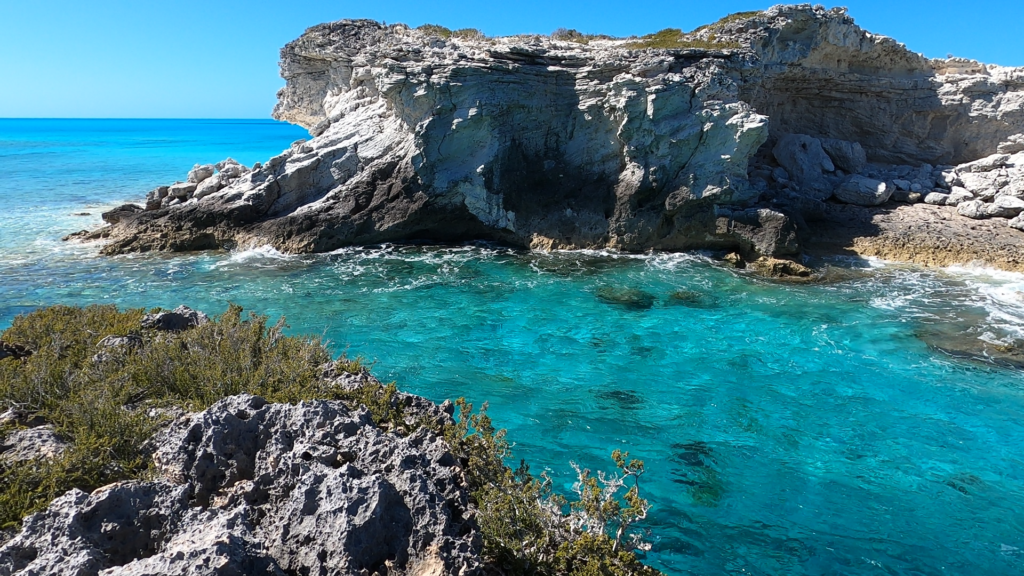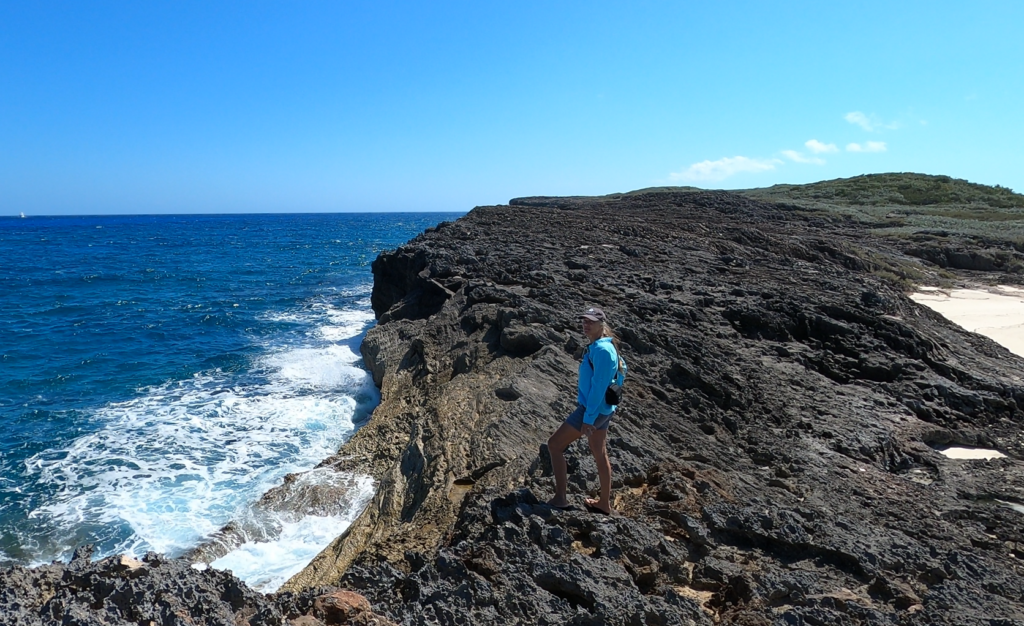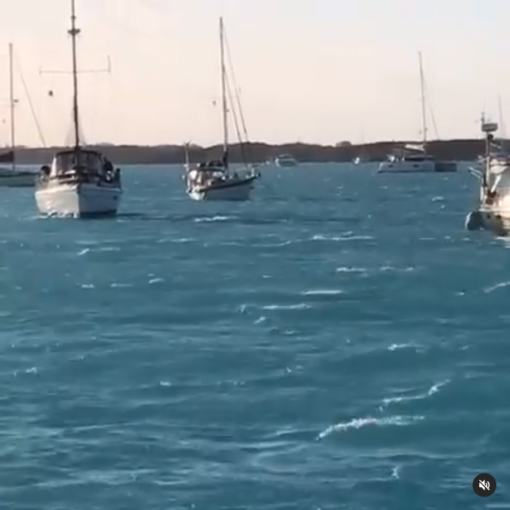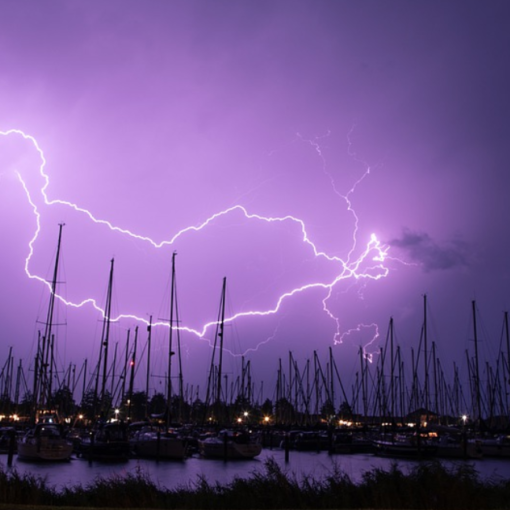
Bitter Guana Cay lies just south of Staniel Cay. Most people reportedly skip it in favor of heading directly to the next settlement at Black Point. Their loss. We were in awe of this spot and had it all to ourselves for a couple days.
The Anchorage
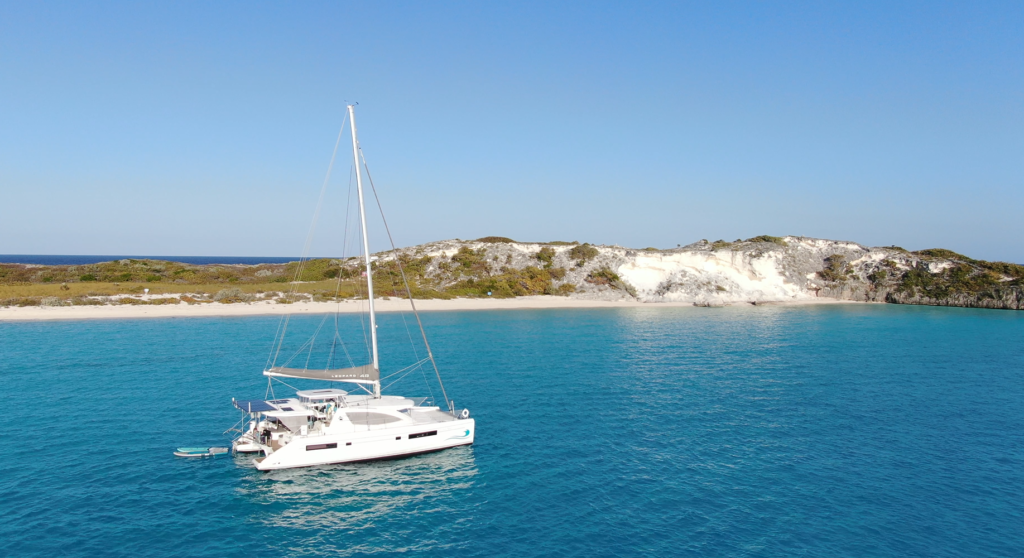
The northern half of Bitter Guana forms a wide bay with a long clear sand beach terminated by high white cliffs. It’s a majestic sight. The bay maintains moderate depth, which enabled us to anchor incredibly close to the beach and simply paddle board in when we wanted.
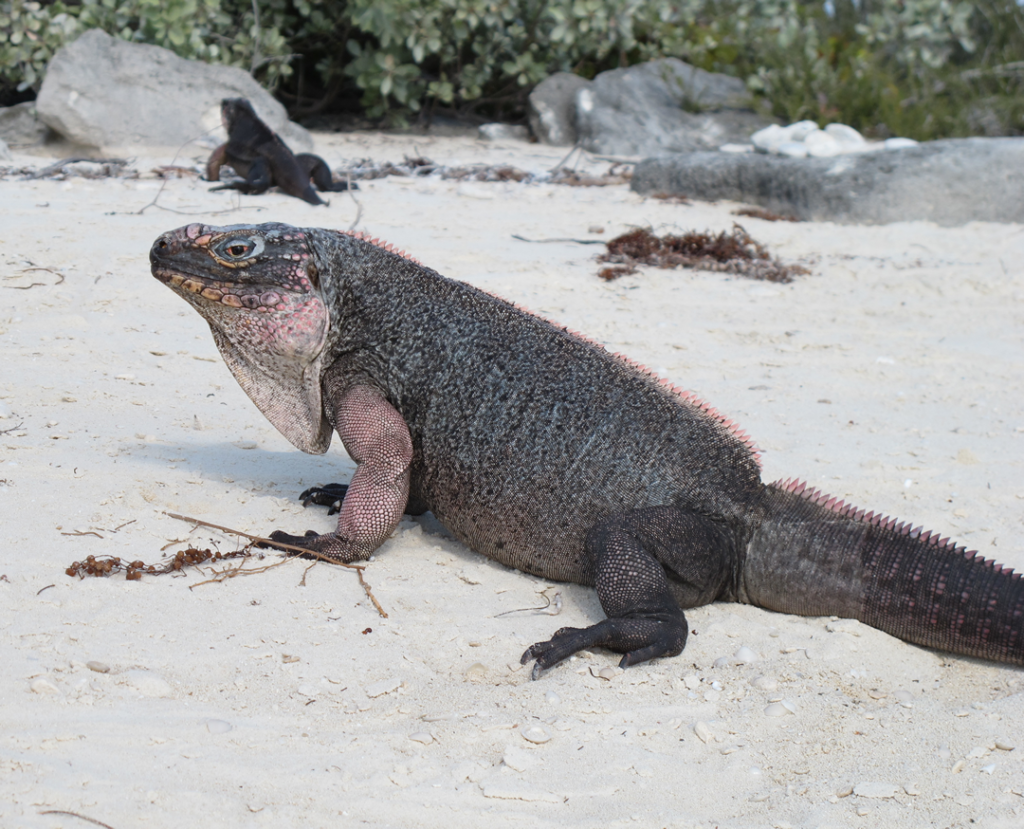
A dozen friendly iguanas roamed the beach’s length. These had the same pink coloring as the Allens Cay iguanas, but were a deeper black overall. A couple times one ran right at us, which was unsettling, but otherwise they minded their own business.
The Hike
This proved to be a hiking paradise. Initially, we did the obvious and hiked atop the white cliffs. What a view!
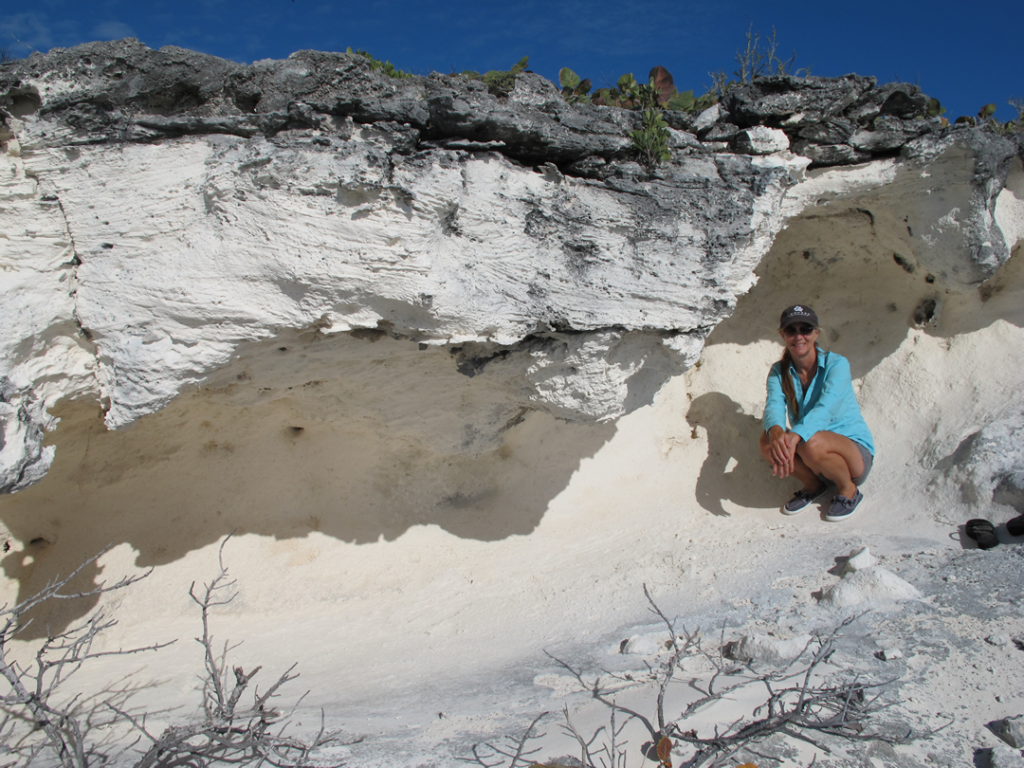
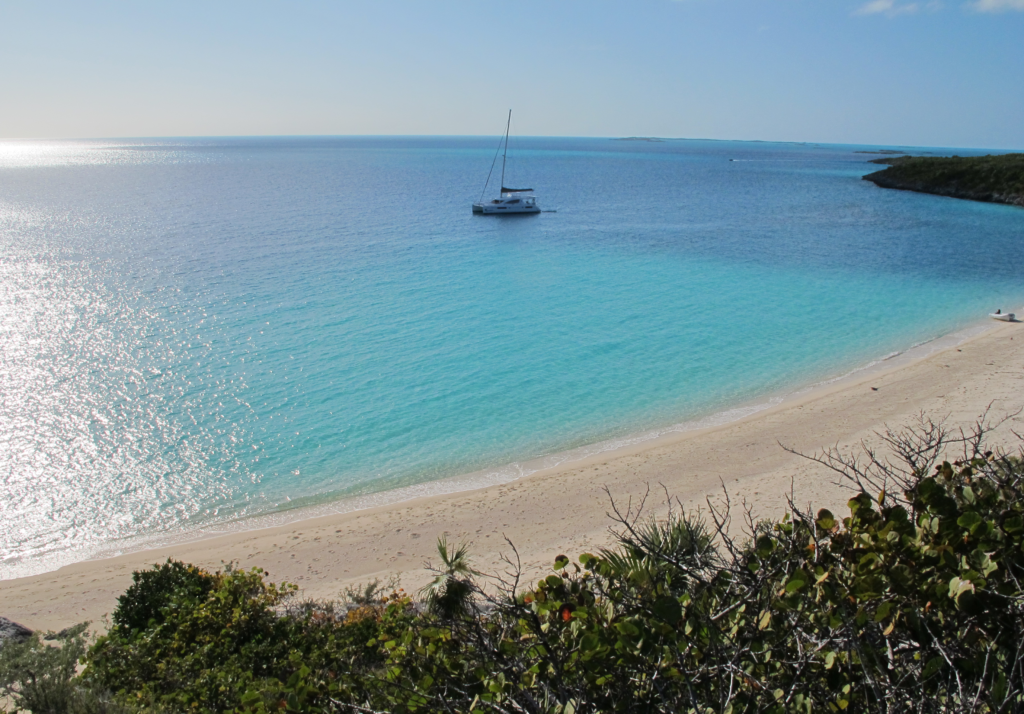
The view disclosed a way south down the cay and over to the Exuma Sound side. We walked for what seemed like miles and couldn’t get enough. We found a hidden beach and then another and then another.
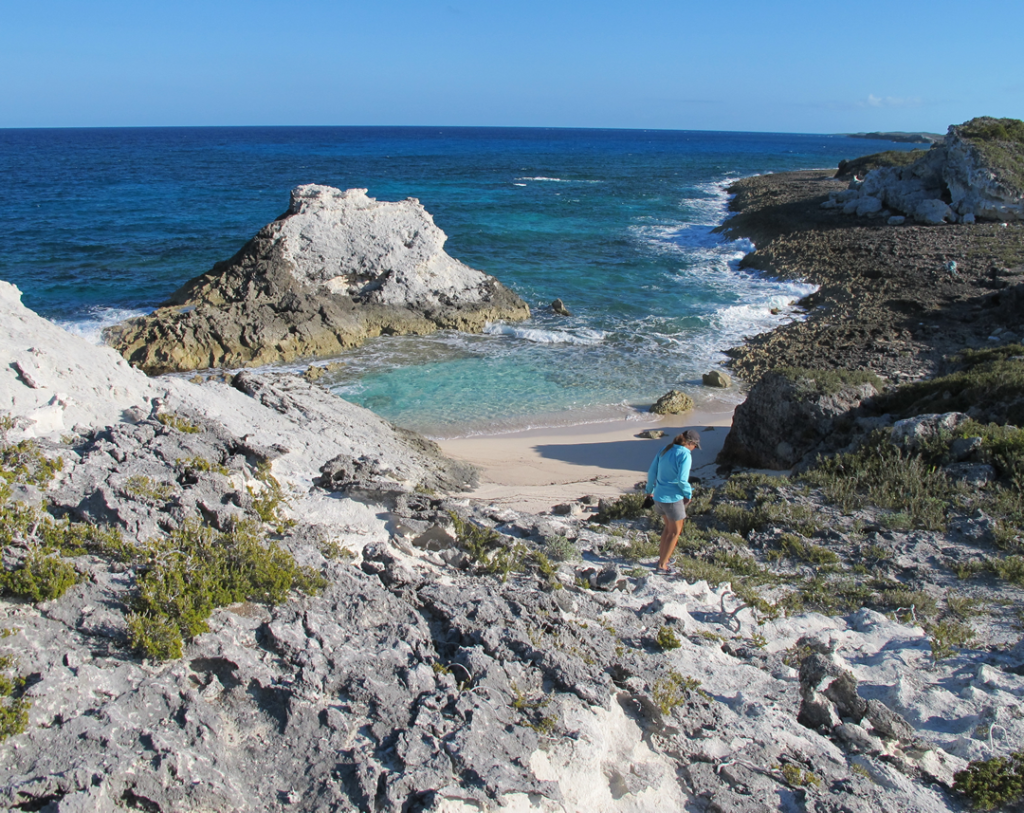
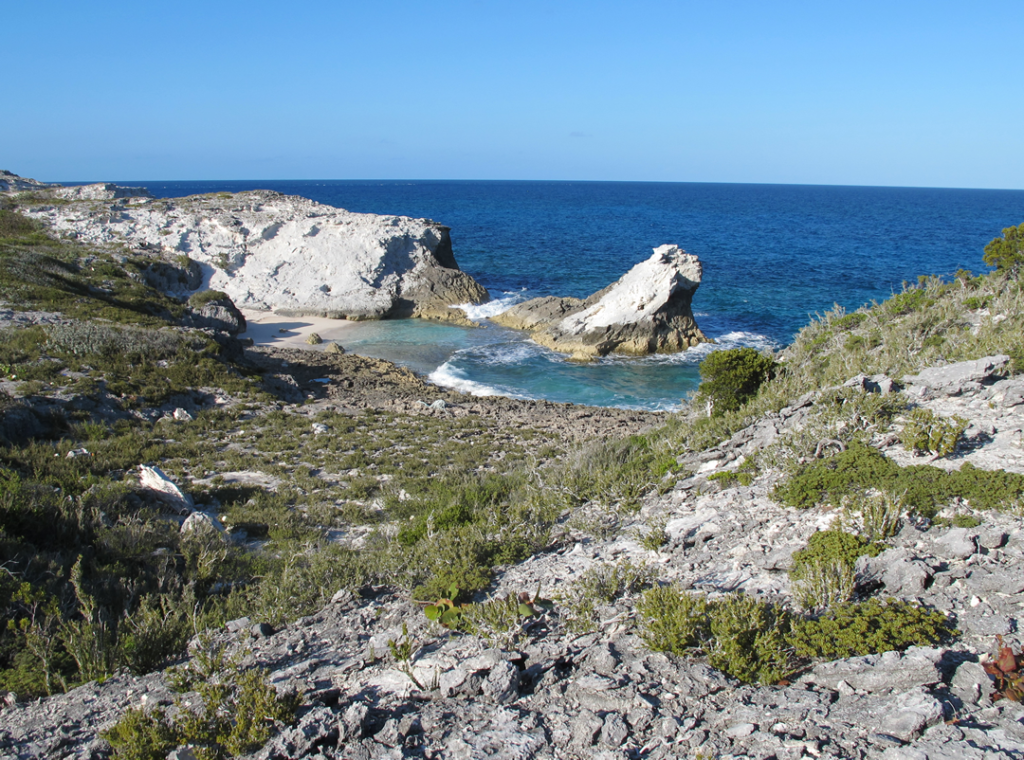
As interesting as the beaches were, it was the rocks that grabbed our attention. Until now, the Exumas were comprised of sharp lava-like rocks formed from old worn corals. These were different – smooth, curved, and highly layered. Viewed from above, many looked like topographic maps.
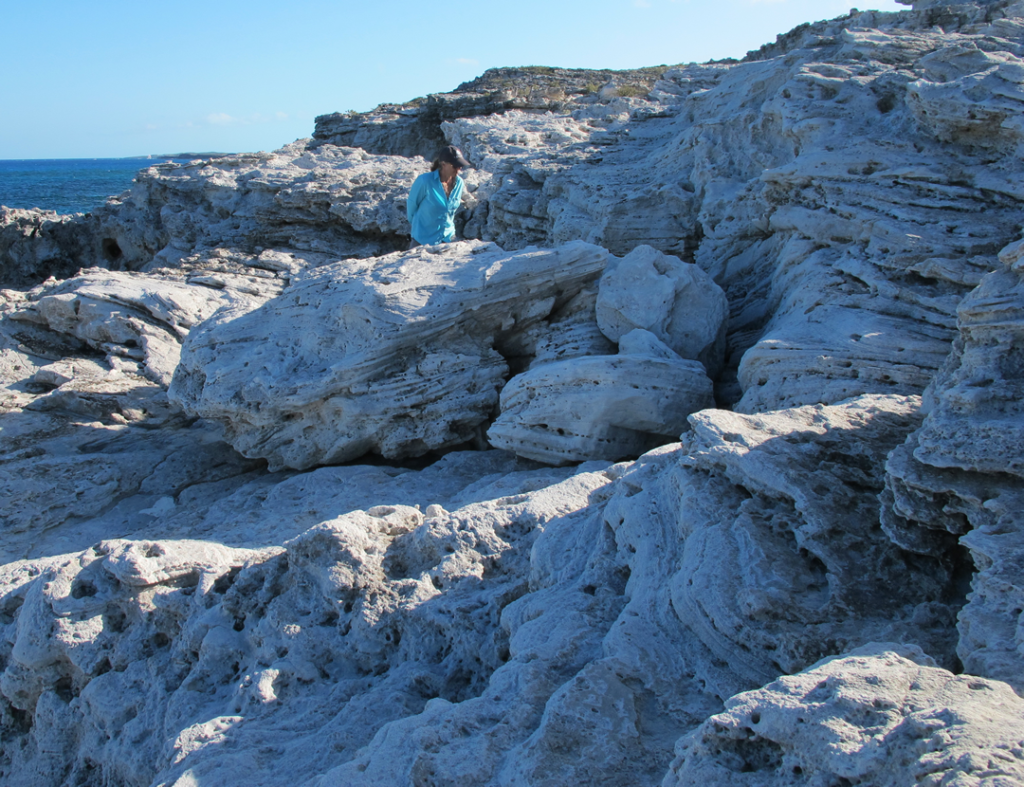
Falcons Nest Visits a Nest
We had read about the cliffs and raging current through the small cut at the south end, so set off by dinghy to investigate. So glad we did!
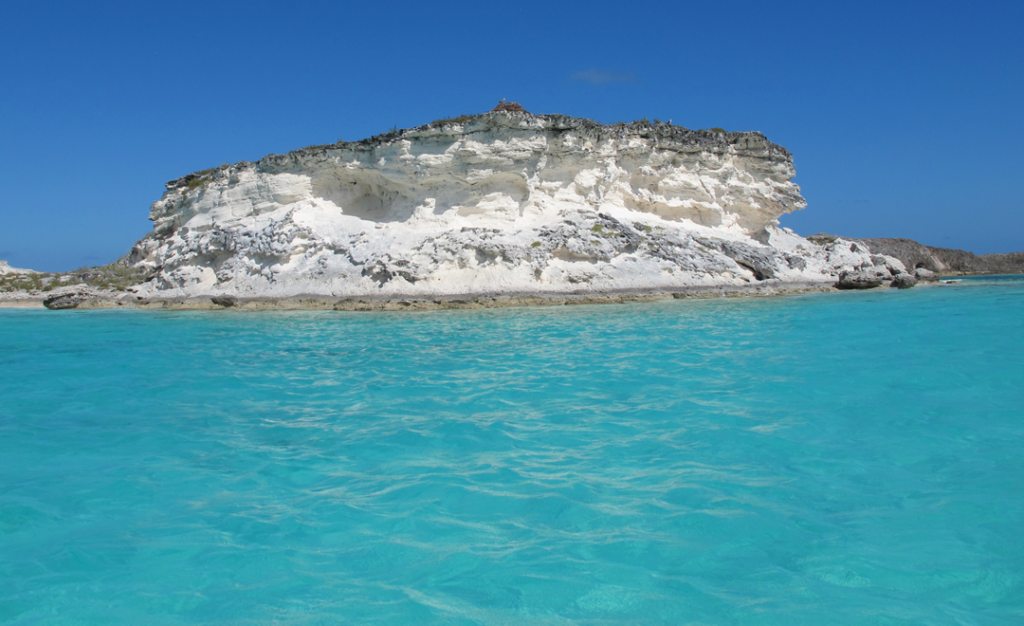
A large white cliff promontory marks the southern end of Bitter Guana Cay. Perfectly situated at its peak was the largest bird’s nest we had ever seen, occupied by a pair of adults and their almost fully-grown offspring.
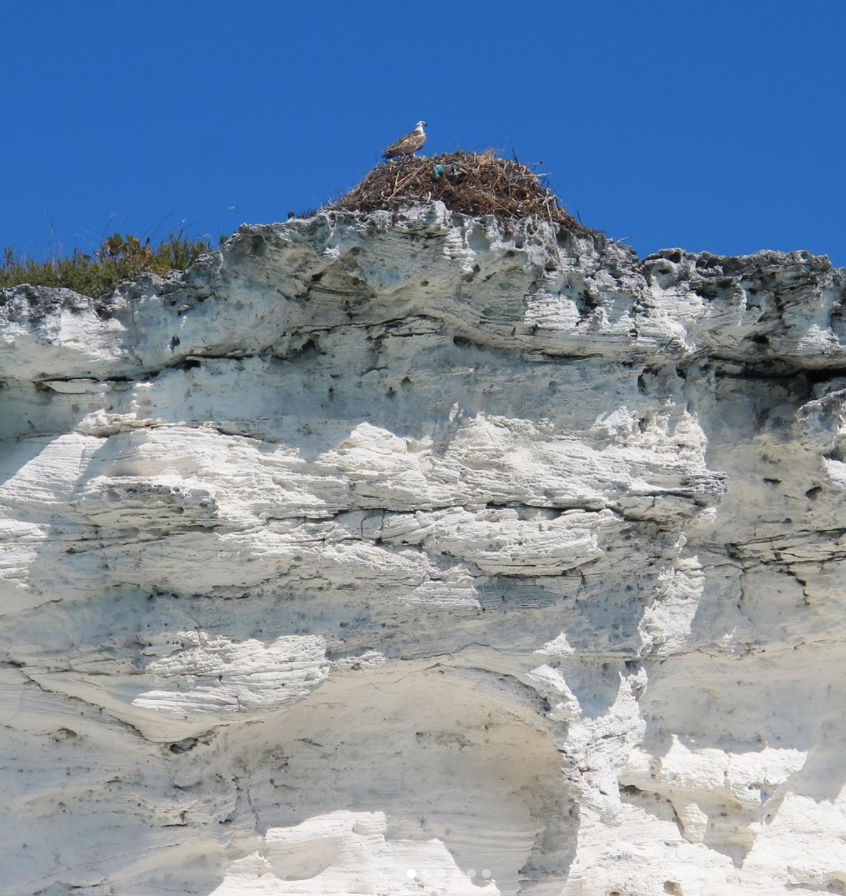
These were Osprey, cousin to the Falcon and other raptors. Their nests can be 10–13 feet deep and 3–6 feet in diameter.
Osprey evolved into highly effective fish hunters. Their long curved talons, reversible outer toe, and toes covered in barbed pads make them uniquely suited to carrying slippery fish. Their wings are longer, thinner, and more feathered than other raptors, enabling them to carry much larger prey. They have a third eyelid, a semi-transparent membrane, that protects the eye during the dive for fish.
We were fascinated. They, not so much. Each time we approached too close, they began to call out. For awhile, one of the adults took flight and soared around the nest. We didn’t want to press our luck with a protective mother, so did our best with our old camera’s poor zoom and moved on.
Across The Cut
Across the tiny cut bordering the Osprey nest is Gaulin Cay South, a small but worthy cay with a long beautiful beach, more iguanas, and cliffs to view the cut and Exuma Sound. Its southern end borders Dotham Cut, one of the main cuts for ship’s passage in the area.
